Florence Price: The story of America’s forgotten musical genius
She was the first Black woman to have her music played by a major orchestra in the US, so why has she been overlooked?
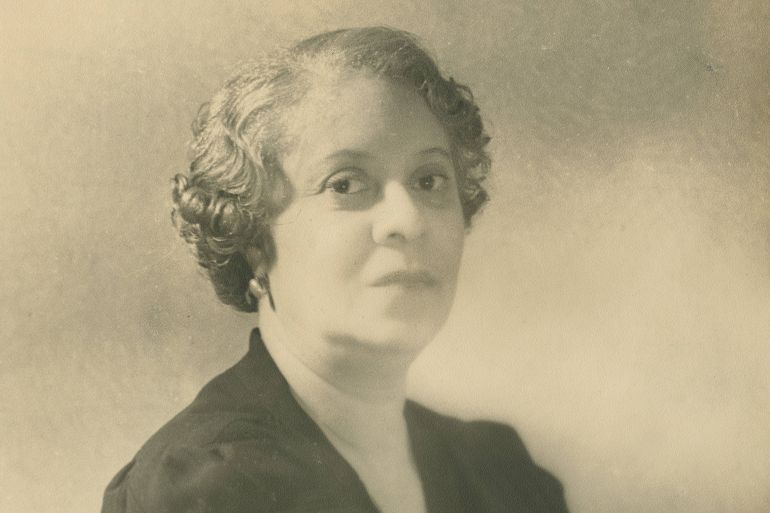
“To begin with I have two handicaps – those of sex and race.”
– Florence Price, 1943, in a letter to Serge Koussevitsky, conductor of the Boston Symphony Orchestra
It was a summer’s day in June 1933, and the Chicago Symphony Orchestra was tuning up. A strange sound filtered from the podium, harmonious and ear piercing in equal measure. The audience shifted and muttered in anticipation. Among them sat 46-year-old Florence Price, whose Symphony No 1 in E Minor was about to have its orchestral debut.
Keep reading
list of 4 itemsThe weight and pressure of American racism
Race in the US: What if your identity was a lie?
An American lynching: ‘I could hear their screams’
Florence was on the cusp of making history. This was the night she would become the first Black woman to have her music performed by an orchestra of this calibre.
Founded in 1891, the Chicago Symphony Orchestra was already one of the “big five” orchestras in the United States, and frequently ranked among the best in the world. Although Black, English composer Samuel Coleridge-Taylor dubbed “the Black Mahler” for his compositional ability, had had his music performed on this scale, never before had a Black woman been in this position.
And Florence was not the only “first” in the room. Her former student and family friend, 20-year-old Margaret Bonds, would perform a concertino for piano and orchestra, becoming the first Black female soloist to play as a guest with the Chicago orchestra.
In 1933, the core orchestra was all-male, and entirely white. Helen Kotas would be hired as principal horn in 1941, becoming the first full-time female member. But the orchestra would not hire a Black musician to perform as a full-time member until 2002, when Tage Larsen was appointed as fourth trumpet.
In 1933, the audience was mostly white, too. Despite theatres being desegregated in 1897, the Auditorium Theatre in downtown Chicago was in an area dominated by wealthy, white families.
Florence’s Symphony in E Minor played – a soaring, spiritual and spectral piece of art.
The Chicago Daily News, one of the most widely read newspapers in the city, called it “a faultless work, a work that speaks its own message with restraint and yet with passion … worthy of a place in the regular symphonic repertory”.
Written in 1931 and early 1932, the symphony generally followed the traditional four-movement structure, while also displaying the individuality and influences of its author. The third movement, called Juba Dance, was inspired by a percussive West African style of music that was brought to the US by enslaved people, and African drums were used alongside traditional orchestral writing.
‘Music goes deep’
A notoriously private person, Florence left little behind to give the world a sense of her voice, her opinions, her feelings.
She “preferred to reveal herself through her music rather than through correspondence and memorabilia,” wrote the late Rae Linda Brown, in her biography of the composer, called, The Heart of a Woman.
She kept a diary, yet only a few pages remain, as, after her death, sections were given away to friends and family as mementos, leaving only a few pages from the last decade of her life.
However, from the pages left behind – an eclectic mix of to-do lists, recorded conversations, and perceptive observations – a picture is painted of a highly intelligent, introspective woman whose love for music went far beyond her own creations.
In her own words: “Music, like religion, goes deep.”
With music in her blood
In 1887, Florence Beatrice Smith was born in Little Rock, Arkansas with music in her blood. Her mother, also called Florence Smith, was a singer and pianist, and her father, Dr James Smith, was a dentist. They were well-respected and well-off.
The family was part of a “small, but powerful Black elite … [bearing] all the earmarks of gentility,” Brown wrote. Educated professionals like Dr Smith were afforded “certain privileges” and more respect in Little Rock, a city often referred to as a “paradise” for Black people in the South, where they made up more than a third of the city’s population.
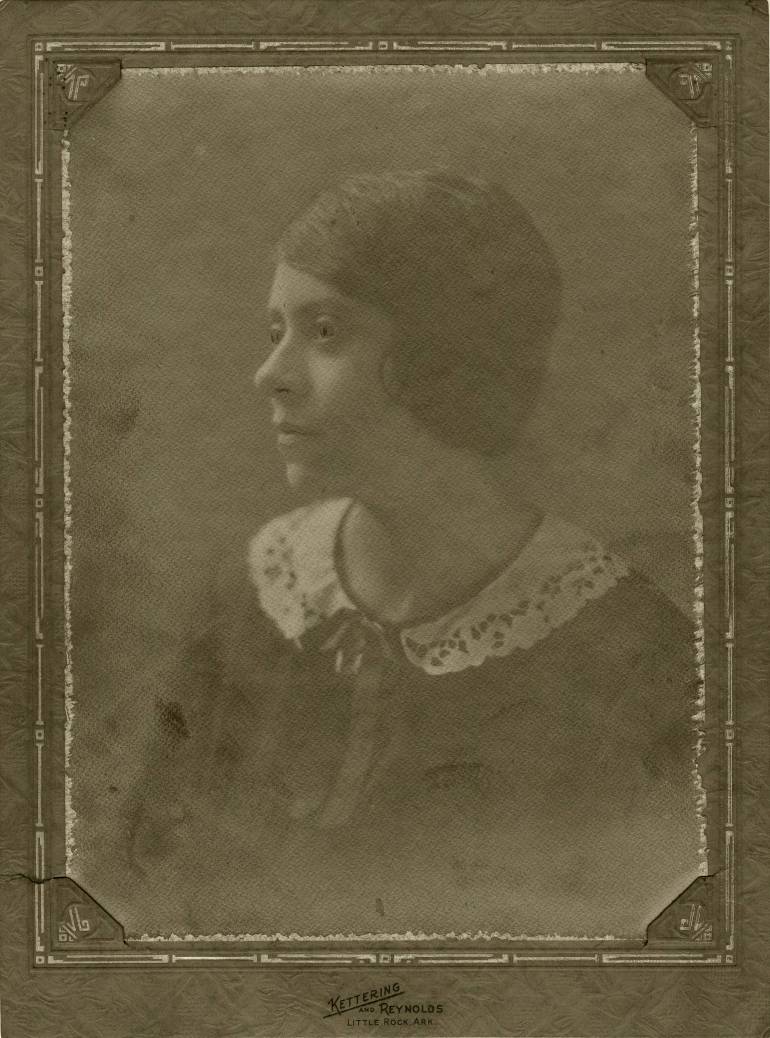
Yet Arkansas in the late 19th century was a turbulent place, marked by corrupt elections, martial law, and factional conflict. The Ku Klux Klan, too, was an ever-present threat.
By the time Florence was an adult, the anti-Black Jim Crow laws had been passed, enforcing segregation and systematically tearing away the “certain privileges” her family had once enjoyed.
In 1903, when she was 16 years old, Florence enrolled at the New England Conservatory of Music in Boston, Massachusetts, a prestigious integrated school. Yet for a while, she told people she was of Mexican descent, on the advice of her mother who worried about the reception her daughter would receive, and listed her hometown in their records as “Pueblo, Mexico”.
Brown observed that “the fact that [Florence] was fair enough to pass for [Mexican] in no way lessens the significance of her achievements, but it attests to the key role that skin color played for Americans in achieving one’s career goals.”
Boston was a world away from her life in Arkansas, more than 1,400 miles (2,253km) away, but it was no paradise. Despite segregation in public schools and transportation being prohibited in Massachusetts, discrimination remained.
Florence graduated from the Conservatory with honours in 1906, at the age of 19. After leaving Boston, she taught music in Arkansas before moving to Atlanta, Georgia, where, in 1910, she became head of music at Clark Atlanta University, a historically Black institution. She became “a formidable teacher and a beacon of light for all her students … the model of an elite Black woman,” wrote Brown.
Moving North
In 1912, Florence married Thomas J Price, a successful lawyer. They met and married in Atlanta, but soon moved back to Little Rock. During the next 15 years, she had three children: Florence, Edith, and finally a son, Thomas Jr, who died in infancy. During this time, Florence did not see “herself as a serious composer”, Brown explained, and focused instead on writing simple pieces for the purpose of teaching.
Then, on April 30, 1927, a white child was murdered in Little Rock. The body of 12-year-old Floella McDonald was found in the belfry of the First Presbyterian church by the building’s janitor. Police soon arrested a mixed-race 17-year-old named Lonnie Dixon – the janitor’s son – and transported the Dixons out of Little Rock to the Texarkana city jail for their own safety. Tensions in the city rose as white protesters called for revenge.
A few days later, on May 4, a Black man named John Carter was accused of harassing a white woman and her daughter on the outskirts of Little Rock. Armed groups patrolled the city searching for the 38-year-old, and, upon finding him, hanged him from a telephone pole. Carter’s corpse was shot, and dragged by cars through the city, stopping at the corner of 9th Street and Broadway, then the heart of Little Rock’s Black community, near to Thomas J Price’s office on 9th Street.
More 5,000 white people rioted in the area, setting Carter’s body ablaze, using doors and church pews from local buildings to fuel the fire. It took three hours for Governor John Martineau to order the Arkansas National Guard to disperse the crowds.
The Chicago Defender, an African American newspaper, reported that in the following days, more than 400 Black people left the city fearing for their lives, many heading north. The Defender was later banned from circulation in Little Rock, out of “concern” it would “stir up” racial tensions.
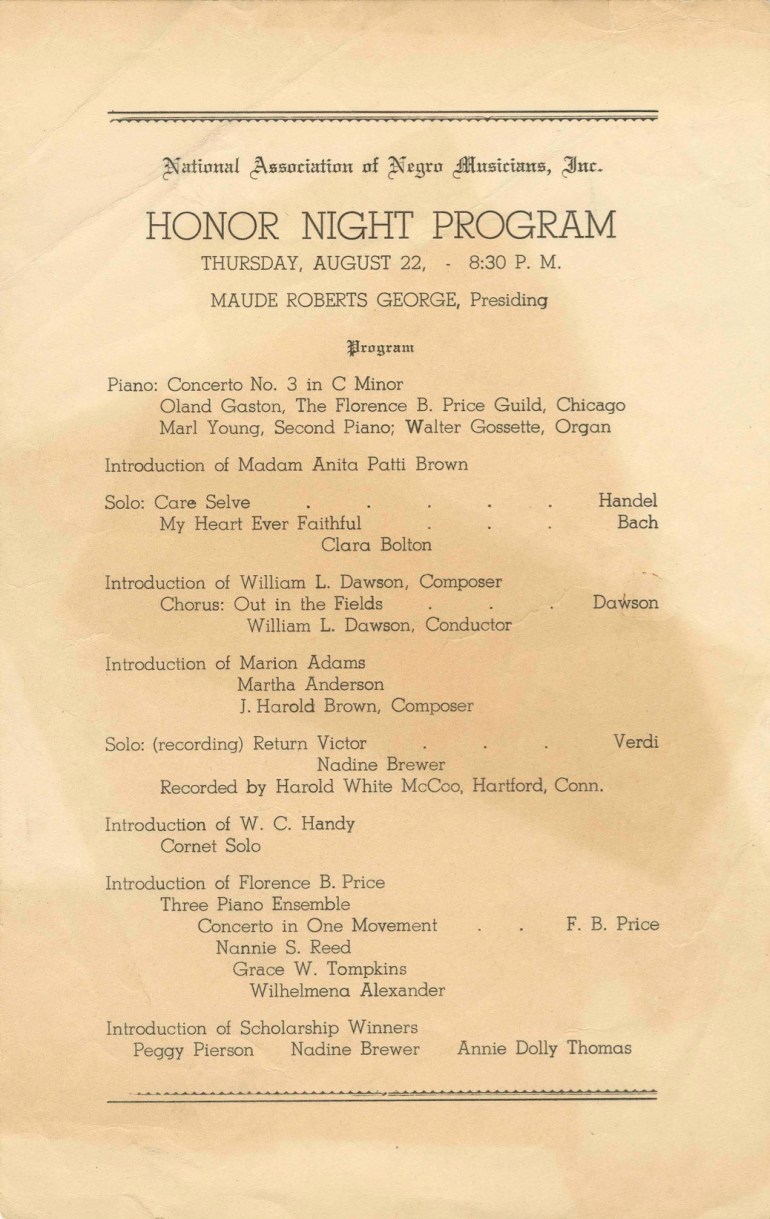
Chicago’s Black Renaissance
The Price family was part of the exodus from Little Rock. They moved to Chicago, along with six million Black Americans who left the South for the North during what became known as the Great Migration from 1915 to 1970.
But two years after moving to Chicago, in 1929, the Wall Street Crash and ensuing Great Depression caused Thomas to lose his job. Financial stress began to take its toll on him and their marriage. In 1931, Florence filed for divorce after nearly 20 years of marriage.
Struggling financially, Florence and her daughters moved in with the family of her friend and student Margaret Bonds, whose mother, Estella, was a leading light in Chicago’s vivacious musical community.
Living in the Bond household, Florence was immersed in a vibrant, creative community of people during the Chicago Black Renaissance – a period spanning the 1930s to 1950s when creativity and racial consciousness was promoted, similar to the earlier Harlem Renaissance in New York.
Soon, Florence became the director of the Chicago Treble Clef Club, a group that organised recitals and events around the city. She was an active member of the National Association of Negro Musicians (NANM), an organisation that – to this day – is dedicated to uplifting and preserving the music of African Americans.
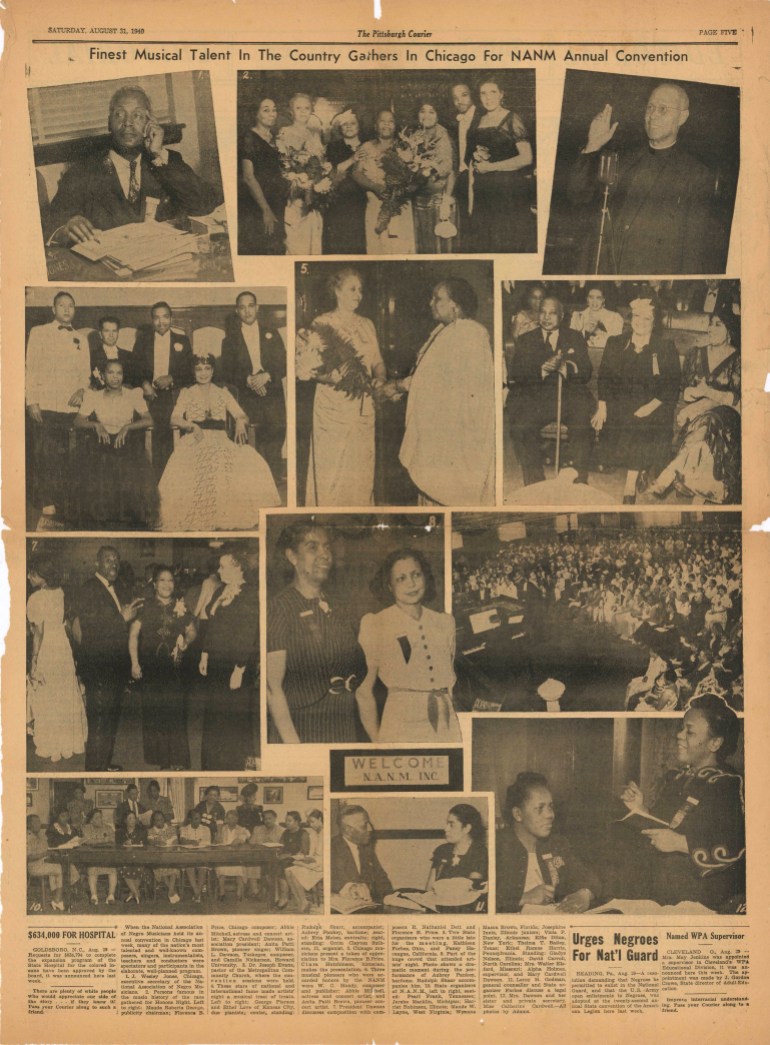
Through the NANM, Florence met luminaries such as contralto Marian Anderson, and trombonist, composer and musicologist William L Dawson. This new environment, surrounded by like-minded Black musicians, gave Florence the impetus to write large-scale works, progressing from shorter spiritual arrangements to orchestral symphonies.
“It was in Chicago that Price’s artistic impulse was liberated … she discovered a city full of vitality and an environment that was conducive to her creative energy,” Brown wrote.
Speaking to author Lindsay Patterson in 1967, Margaret Bonds recalled evenings around her kitchen table when “every brown-skinned musician in Chicago who could write a note” would help Florence meet her compositional deadlines. This community spirit helped Florence flourish.
A winning symphony
In 1932, Florence entered, and won first prize in, the Rodman Wanamaker Music Contest for her Symphony in E Minor. Founded in 1927 by philanthropist Rodman Wanamaker, the contest reflected his desire to create a platform for Black composers. Announced in the Chicago Defender, it was described as “an event of paramount importance open to all musical composers of the Race.” Margaret succeeded here, too, aged only 19, taking second place in the competition for her piece, Sea Ghost.
As the winner, Florence’s symphony caught the attention of Frederick Stock, the conductor of the Chicago Symphony Orchestra – leading to the 1933 performance that put her in the history books.
Opportunities like the Wanamaker Music Contest were few and far between for Black musicians. However, there were some who had found success, including Thomas Wiggins, whose parents had been enslaved, and who became the highest-paid pianist of the 19th century.
Marian Anderson, an internationally acclaimed contralto singer, was another Black musician who influenced Florence’s life; she would write more than 50 original songs for her. In 1939, Marian was refused permission to perform at the Constitution Hall in Washington, DC by the Daughters of the American Revolution (DAR), which cited a “white performers only” policy. As Washington, DC was a segregated city, Marian was unable to find an alternative venue.
This incident led First Lady Eleanor Roosevelt and thousands of other women to withdraw from the DAR. “I am in complete disagreement with the attitude taken in refusing Constitution Hall to a great artist … you had an opportunity to lead in an enlightened way and it seems to me that your organization has failed,” the first lady wrote in a letter to the group.
President Franklin Delano Roosevelt, and Walter White, the secretary of the National Association for the Advancement of Colored People (NAACP), managed to move Marian’s performance to the steps of the Lincoln Memorial, where it took place on Easter Sunday – April 9, 1939 – before an integrated audience of 75,000 people. The now-iconic open-air concert was broadcast to millions via radio. Among other songs, Marian performed, My Soul’s Been Anchored in the Lord, by Florence Price.
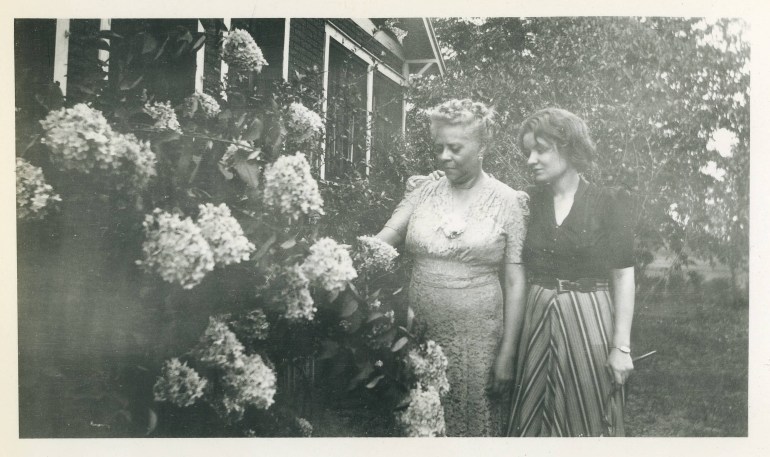
Despite her successes, in a 1943 letter to Serge Koussevitsky, the conductor of the Boston Symphony Orchestra, asking him to consider performing one of her works, Florence was all too aware of the struggles she faced. “Unfortunately the work of a woman composer is preconceived by many to be light, frothy, lacking in depth, logic, and virility. Add to that the incident of race – I have Colored blood in my veins – and you will understand some of the difficulties that confront one in such a position,” she wrote.
In 1951, Florence was contacted by Sir John Barbirolli, the musical director of the Halle Orchestra in Manchester, England. He commissioned her to compose a symphony incorporating the traditional spirituals that had become synonymous with her work. Florence completed the score, but health issues prevented her from attending the premiere performance in Manchester. Nonetheless, her reputation had finally reached Europe.
‘Expanding their world view’
Chi-chi Nwanoku is a double bassist, and founder and director of Chineke!, a foundation whose mission is to provide career opportunities to Black, Asian and ethnically diverse classical musicians in the UK and Europe. She said Florence is “unequivocally overlooked”.
“Up to now, we have become accustomed to thinking that only white men are capable of producing masterpieces and expressing grandiose sentiments through complex musical works,” she said.
Lauded as one of the most powerful women in the music industry, Nwanoku noted that her extraordinary career has become “so much more interesting … now that we are becoming more open to hearing the music and untold stories of people that have been marginalised and pushed aside”.
For musicians of Black, Asian, and ethnically diverse heritage, “it is heartening to know that there is a lineage of Black classical music that goes even further back in time than Price and Coleridge-Taylor,” she added.
It was 1953 when Florence died of a stroke. The manuscripts in the attic of her summer home were left untouched for more than 50 years as the house fell into ruin, suspended in time. Her daughters donated the papers they did find to the University of Arkansas. Only in 2009, when the house was explored, were the papers discovered. But by then, Florence had been largely forgotten.
Nwanoku noted the “extraordinary” difference between how Florence and some of her male contemporaries have been remembered.
“We think of that period of the 20th century, a very fertile time for experimentation in classical music; we think of Samuel Barber, Aaron Copeland, George Gershwin, Benjamin Britten, etc”, all of whom, she said, are now “household names”.
But since her death, Florence’s legacy has not followed the path of her fellow 20th-century composers. Despite her work being hailed by the media during her own lifetime as “worthy of a place in the regular symphonic repertory”, she is, more often than not, mentioned as an outlier today.
Nwanoku said that in order to fully grasp the significance of composers like Florence, “we have to change our attitudes towards classical music in thinking it is mainly the preserve of white male composers of the past.” Instead, the musical world should “commemorate the lives [of underrepresented musicians] and simply enjoy and respond to the music, because it’s wonderful in and of itself.”
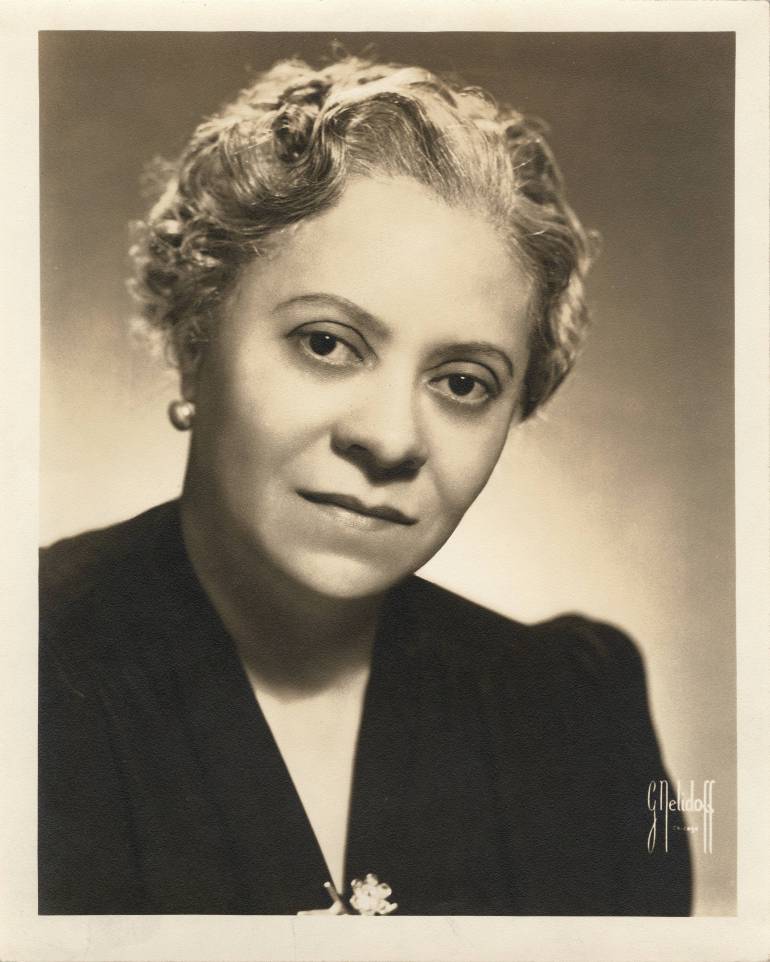
In the past 40 years, the gender ratio in classical music has narrowed, with more female musicians, and the number of Black and minority ethnic (BAME) classical musicians has increased, according to a report from the League of American Orchestras. But the numbers are still low. Another report from the British Ivors Academy found that only 6 percent of commissioned composers are from BAME backgrounds in the UK, and only 21 percent of commissioned composers are female.
Increasing diversity is one of the most important talking points in the classical world right now, and some change is taking place. One of the constituent orchestras of the National Youth Orchestra of the USA was slated to perform some of Florence Price’s work, were it not for the continuing coronavirus pandemic. The National Youth Orchestra of Great Britain ran a digital residency for its young musicians during the summer, rehearsing and performing Mighty River, a piece exploring the history of the slave trade, written by Belize-born composer Errollyn Wallen.
Nwanoku emphasised the importance of enriching orchestral repertoire in this way, but said that “venues and orchestras need to programme these artists not in a merely perfunctory way – just because it’s Black History Month, for example – but as a way of expanding their world view.”
“The fact is, when music is good, it’s undeniably good. You cannot keep it down and hold it back, or prevent people from listening to it. That is why Florence B Price is such an inspiration, because she didn’t conform to what was expected of her.”